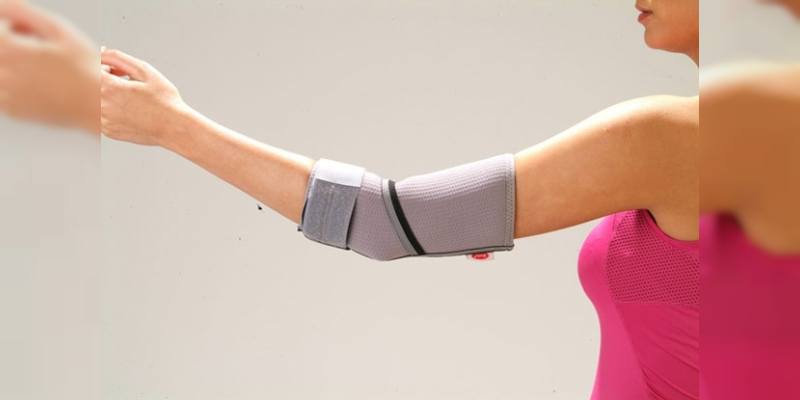Lateral epicondylitis known as tennis elbow is characterized by pain in the outward protruding area of the elbow. It is caused by small ruptures and degeneration of tendons in this area depending on repetitive forcing. Tennis elbow which is an occupational disease is seen in repairmen, housewives, sporter using their hand and people using computer often. The most significant symptom is the pain in elbow. This pain may radiate upwards to the arm or downwards to the forearm.
Symptoms of Tennis Elbow
The most common symptom of tennis elbow is the pain of the protruding area of the elbow and radiates to the forearm. The pain increases when the patient tries to lift an object. Also, arm muscles may be weak. In early stages, pain may be mild but it increases with long-term and repetitive movements. It is felt mostly while lifting teapot, squeezing cloth, using tools such as screwdriver and pliers. Symptoms of tennis elbow affecting daily life in adverse ways are observed even while resting.
Causes of Tennis Elbow
Lateral epicondylitis is observed in all persons forcing their forearms. It is called tennis elbow as tennis players force their elbows during backhand and the disease is observed in tennis players. However, it is not observed just in tennis players. Lateral epicondylitis identified as an occupational disease is often seen in:
- Installers,
- Repairmen,
- House painters,
- Weavers,
- Tennis players,
- Housewives.
Today, we keep our hands in the same position for a long time due to tools such as computers, phones, forcing our hand and wrist, therefore our small muscles are forced and hand, wrist and elbow diseases are stimulated. After the pain is felt, if the same movements are repeated, the area is forced, gets irritated, and pain becomes chronic. Although tennis elbow is observed in every age, it occurs mostly in age of 30-50. Sometimes, it may occur without any reason.
How is Tennis Elbow diagnosed?
Cause of all pain around the elbow may not be tennis elbow. Those who force their muscles to build muscle and those having joint and cartilage-related diseases may have similar pain around the elbow. This disease is diagnosed with a good examination and necessary tests.
In a patient having tennis elbow, the pain increases when
- A force is applied while the wrist is lifted up,
- The pressure is applied to the protruding area of the elbow,
- The forearm is twisted outward.
To distinguish tennis elbow from other diseases, imaging methods such as x-ray and MRI can be performed.
Non-Surgical Tennis Elbow Treatment
Aim of tennis elbow treatment is to remove inflammation, reduce pain and increase gripping ability. One of the treatment methods of the disease is to enable the pain area relieve. If the arm is used despite pain, tissues are deformed and the pain gets severe. Movement of the muscle group reaching from elbow to fingers and wrist are restricted with tapes placed on the elbow as well as resting and cool treatment. So that, muscle group on the upper part of the tape is restricted and work less. In the event that, the disease does not recover with these methods, injection treatment is applied. Two methods are used in injection treatment. First of them is steroid (cortisone) injection having been used for long years. It is applied to the same area 1-3 times.
Another injection method is a liquid obtained from the patient’s own blood and having reformative factors, called PRP. In PRP treatment, obtained blood is centrifuged and the platelet-rich part is injected into the damaged area. This platelet-rich part has reformative factors. Maximum success is obtained when PRP is applied 2-3 times. As it is patient’s own blood, it does not contain any harmful material. The success rate of injection is 60-80%. For more information, you can read PRP treatment article.
Surgery of Tennis Elbow
In the event that these applications are not sufficient and the pain lasts for the long term, surgical treatment is applied. In the surgery, degenerated tendon in the painful area is dissected from adhesion area. The diseased area is cleansed and tendon is sutured and repaired. To prevent the arm getting tired, the patient uses shoulder strap for 3 weeks after the surgery. Patients can get back to their daily life right after the surgery. The patient should wait for 3 weeks when the shoulder strap is removed to get back to daily life completely.
Forearm, hand, and wrist are the areas most used during daily activities. It is possible to prevent such diseases by protecting hand and wrist.
- It is possible to minimize the risk by taking frequent breaks and resting and exercising wrist and fingers while working with computer for a long time,
- By supporting the wrist with mouse pad while working with the computer,
- By using wrist or elbow splint to decrease muscle force,
- By regularly exercising for shoulder, elbow, and wrist.








